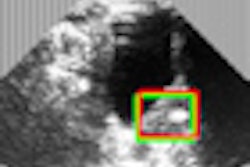MIAMI BEACH, Fla. - If you're a radiation dosimetrist, you spend hours analyzing your facility's radiation treatment plans on a regular basis. But such quality assurance (QA) has to be performed manually, an unpleasant drudgery. Fortunately, a better way was described in a poster presentation at this week's American Society for Radiation Oncology (ASTRO) annual meeting.
The poster described the proof-of-concept work of a team of radiologists adept in computer programming from Washington University School of Medicine in St. Louis; the group worked with engineers from Philips Healthcare to develop prototype software that automates the process of analyzing multiple charts for dosimetric quality of radiotherapy treatment plans. The automated process takes about 80 minutes to evaluate 45 patient plans; if performed manually, this task would take hours.
Dr. Parag Parikh, assistant professor of radiology and biomedical engineering, explained that he and his colleagues asked themselves if it would be possible to develop software that seamlessly works with a commercial radiation oncology treatment planning system to evaluate groups of patients at one time. The radiation oncology department uses a Philips Pinnacle3 treatment planning system, so they approached the company about receiving engineering assistance to develop an automated reviewing infrastructure.
The prototype embeds the Python programming language in Pinnacle3, allowing for completely automated evaluation of a set of plans for different patients. Standardized naming of structures facilitated the comparison. The prototype was used to assess 19 normal tissue structures in the head and neck. "There was no user intervention whatsoever," Parikh said.
To test the system and perform a proof-of-concept study, treatment plans developed over a 12-month period for head and neck cancer patients were randomly selected for two radiation oncologists on staff. A total of 45 patient plans were selected for analysis -- 26 for one physician and 19 for the other.
"With a few mouse clicks, a physician can get attributes about groups of patients," Parikh said. "By having those attributes, we compared 45 treatment plans with a total of 855 structures in slightly over one hour. This normally would be a laborious project assigned to a medical student: opening every chart of every patient selected, writing down some numbers, entering them into a database. And if a department didn't have medical students, radiation oncologists or department staff could be spending hours, possibly days, doing this."
However, in 77 minutes, the plans were analyzed. The two physicians had similar tissue-sparing rates for the brain, brainstem, eyes, larynx, upper esophagus, spinal cord, and right submandibular gland. Their rates of sparing were dissimilar for the optic chiasm, optic nerves, parotid glands, left submandibular gland, oral cavity, and the mandible.
Both physicians are investigating action plans to identify the root causes of these differences. They suspect that the variances might be associated with differences in tumor stage and elective volume segmentation, as well as the different dosimetrists who worked on the plans.
"This software has the potential to improve individual radiation oncologists' practices," Parikh said. It also will provide data needed to obtain American Board of Radiology (ABR) certification and to comply with reporting requirements for the U.S. Centers for Medicare and Medicaid Services (CMS).
Future work will focus on each physician's plan using the Quantitative Analysis of Normal Tissue Effects in the Clinic (QUANTEC) guidelines to satisfy department quality initiatives and CMS requirements.
"We are currently working on getting reports showing late effects for normal tissue. We want to update guidelines on what certain doses should be for specific organs," Parikh said. "With the automated data gatherer, we are planning to develop a report for every single patient we treat. Data will be captured at the time that we review the plan."
The team intends to tackle treatment plans of prostate cancer patients, to make sure that plan quality is the same among the radiation oncologists who prepared them. To stimulate use of the prototype, the team has offered to run the data for their colleagues for ABR certification and for the CMS requirements, Parikh said. Once they see what the system can do, they realize its time-saving potential.
When asked if the product is heading toward commercialization, Parikh said that if enough of Philips' customers request it, it might become a commercial product. If there are not enough potential customers who want the capabilities, the software may never go beyond the research lab environment at Washington University, he said.



















